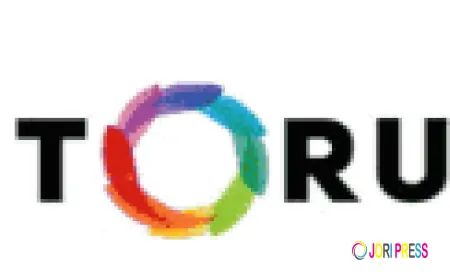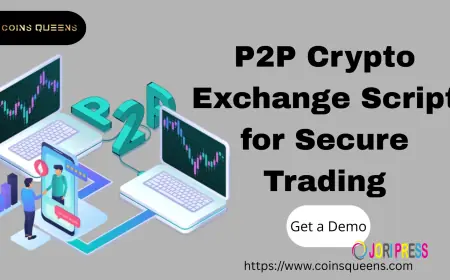How Do Web3 Marketing Campaigns Maximize Investor and User Engagement?

Web3 represents a paradigm shift in the way digital products, services, and communities operate. Unlike Web2, where platforms control user data and engagement, Web3 emphasizes decentralization, user ownership, and community-driven ecosystems. As projects in blockchain, decentralized finance (DeFi), NFTs, and AI tokens proliferate, effective marketing becomes the linchpin for success. A well-executed Web3 marketing campaign can drive investor interest, foster active user participation, and ensure long-term project sustainability. In 2025, maximizing engagement requires not only creativity but also a deep understanding of decentralized systems, tokenomics, and community dynamics.
Understanding Web3 Marketing
Web3 marketing refers to promotional strategies that leverage blockchain principles, decentralized platforms, and token-based incentives to engage both investors and users. Unlike traditional marketing, Web3 campaigns prioritize transparency, community participation, and user empowerment. Investors in Web3 projects are not just passive stakeholders—they are often active participants in governance, content creation, and platform growth. Therefore, engagement strategies must align with these expectations, offering value beyond simple financial returns.
Key features of Web3 marketing include tokenized incentives, social-first communication, community-driven content, and decentralized channels such as Discord, Telegram, and Web3-native social platforms. Projects that effectively harness these features can create organic growth loops, where engaged users attract further participation through social sharing, referral programs, and peer recommendations.
The Importance of Engagement in Web3
Engagement is central to Web3 success. Unlike traditional startups, the value of Web3 projects is highly dependent on active user participation and investor confidence. For DeFi platforms, high engagement leads to more liquidity, higher trading volumes, and vibrant governance. For NFT projects, engagement drives secondary market activity and long-term brand loyalty. For tokenized ecosystems, active communities ensure sustainable network effects, which are critical for project longevity.
High engagement also fosters trust, a crucial factor in a space that is often associated with volatility and scams. Investors and users are more likely to participate in projects that demonstrate transparency, responsiveness, and a strong sense of community. Web3 marketing campaigns are thus designed not only to attract attention but to cultivate trust and incentivize meaningful interaction.
Key Web3 Marketing Campaign Strategies
-
Token Incentivization Programs
Tokenized incentives are among the most effective methods to engage users. Projects often reward early adopters, liquidity providers, or community contributors with native tokens. Gamified structures such as staking, yield farming, and NFT rewards create multiple layers of engagement. AI-driven tools can further optimize these incentive programs by analyzing participation trends, predicting user behavior, and dynamically adjusting rewards to maximize retention. -
Community-First Communication
Web3 communities thrive on direct communication. Successful projects invest heavily in platforms like Discord, Telegram, and emerging decentralized social networks to maintain open channels with users and investors. Community managers facilitate discussions, host AMA (Ask Me Anything) sessions, and address concerns in real time. Effective campaigns often combine human interaction with AI-powered moderation and support, ensuring timely responses without overwhelming the team. -
Content-Driven Engagement
Content remains a cornerstone of Web3 marketing. Projects produce educational materials, tutorials, and thought leadership articles to attract both novice and experienced users. Video content, interactive webinars, and NFT storytelling can enhance comprehension and create emotional connections. By leveraging AI analytics, campaigns can identify which content resonates most with different segments, optimizing distribution and engagement. -
Influencer Partnerships and Cross-Promotion
Influencers play a vital role in amplifying Web3 campaigns. Unlike traditional social media, Web3 influencers often operate as investors or enthusiasts within the ecosystem. Partnering with credible figures can boost awareness, drive participation in token sales, and promote platform features. AI can streamline influencer identification by analyzing follower demographics, engagement authenticity, and past collaboration success, ensuring that marketing efforts are strategic and impactful. -
Gamification and Interactive Experiences
Gamification transforms user engagement from passive observation to active participation. Projects introduce challenges, leaderboards, and quests that reward users for completing actions such as trading, staking, or sharing content. These experiences encourage repeated interactions, deepen community loyalty, and create social proof. Integrating gamified elements with AI personalization ensures that challenges remain relevant and motivating for individual users. -
Data-Driven Personalization
AI and machine learning enable hyper-personalized marketing strategies. By analyzing user behavior, transaction history, and engagement metrics, Web3 campaigns can deliver tailored content, offers, and notifications. Personalized experiences increase the likelihood of conversions, whether that means participating in token sales, joining governance initiatives, or purchasing NFTs. Personalization also fosters stronger emotional connections, enhancing long-term retention. -
Cross-Platform Engagement and Ecosystem Building
Web3 users interact across multiple platforms, from decentralized exchanges to NFT marketplaces and social networks. Campaigns that integrate cross-platform engagement strategies can provide seamless experiences. For instance, rewarding users for activity across multiple platforms reinforces loyalty while promoting ecosystem-wide adoption. AI analytics helps track multi-platform interactions, ensuring that campaigns remain cohesive and effective.
Enhancing Investor Engagement through Transparency
Investor engagement is heavily influenced by transparency and trustworthiness. Web3 projects that provide clear updates on tokenomics, project milestones, and governance mechanisms tend to attract long-term investment. Blockchain technology inherently supports transparency through immutable transaction records and public smart contracts, but marketing campaigns must communicate these advantages clearly.
Regular reporting, dashboards, and progress updates increase investor confidence. Integrating AI into investor relations can help predict potential concerns, automate reporting, and identify areas where messaging may need adjustment. By proactively addressing investor queries and providing transparent data, projects cultivate loyalty and reduce the risk of negative sentiment spreading within the community.
Leveraging AI for Optimized Campaign Performance
AI plays a crucial role in maximizing engagement in Web3 marketing campaigns. Predictive analytics identifies high-value users and predicts participation trends, allowing campaigns to target efforts where they will have the greatest impact. Sentiment analysis monitors social media and forum discussions, enabling rapid responses to concerns or misinformation. AI-powered content recommendation engines can tailor materials to individual preferences, enhancing engagement rates.
Moreover, AI-driven performance monitoring allows real-time optimization. Campaign managers can track which initiatives yield the best results, which social channels perform most effectively, and which incentives generate maximum participation. This continuous feedback loop ensures that campaigns evolve alongside market conditions and community preferences.
Case Studies: Web3 Campaigns Driving Engagement
-
Uniswap
Uniswap, a leading decentralized exchange, has successfully leveraged community engagement through token governance and liquidity mining campaigns. By rewarding users for providing liquidity and participating in governance, Uniswap created a loyal, active investor base that drives platform adoption and market credibility. -
Axie Infinity
Axie Infinity, a blockchain-based gaming platform, combined gamification and token incentives to drive engagement. Players earned tokens by participating in gameplay, trading NFTs, and completing challenges. This created a self-sustaining ecosystem where users were incentivized to engage continuously while contributing to platform growth. -
Decentraland
Decentraland, a virtual reality platform, uses content-driven engagement and influencer partnerships to expand its user base. Through virtual events, educational content, and community contests, Decentraland fosters active participation and encourages long-term retention. AI analytics further help the platform optimize events and promotions based on user behavior.
Challenges in Web3 Marketing Engagement
Despite its potential, Web3 marketing faces unique challenges. The decentralized nature of projects means that teams have less direct control over users, requiring campaigns to rely heavily on community trust and peer influence. Regulatory compliance and data privacy are also critical concerns, especially when using AI-driven personalization tools.
Market saturation poses another challenge. With thousands of tokens and NFT projects launched each year, capturing attention is increasingly difficult. Projects must differentiate themselves through innovative campaigns, strong branding, and unique value propositions. Finally, balancing automation with authentic human interaction is essential. While AI can enhance efficiency, communities value genuine engagement and responsiveness from project teams.
The Future of Web3 Engagement Campaigns
The future of Web3 marketing lies in hyper-personalization, AI-driven insights, and immersive experiences. Campaigns will increasingly integrate decentralized autonomous organization (DAO) governance, NFT-based incentives, and metaverse interactions to deepen engagement. AI will enable continuous optimization, sentiment monitoring, and predictive targeting, ensuring campaigns remain adaptive and impactful.
By 2025, projects that successfully combine technology, transparency, and community-first strategies will maximize investor and user engagement, creating ecosystems that thrive long-term. Marketing campaigns will no longer be standalone efforts—they will be integral components of Web3 platforms, shaping user experience, governance participation, and financial growth simultaneously.
Conclusion
Maximizing engagement in Web3 requires a multifaceted approach that blends innovation, transparency, and community focus. Tokenized incentives, gamification, personalized content, and AI-driven analytics are all essential elements of successful campaigns. By fostering trust, providing value, and continuously adapting to user behavior, Web3 projects can cultivate active communities, drive investment, and secure long-term growth. In 2025 and beyond, the projects that excel in these areas will set new standards for digital engagement, proving that marketing in decentralized ecosystems is as strategic as it is transformative.
What's Your Reaction?
 Like
0
Like
0
 Dislike
0
Dislike
0
 Love
0
Love
0
 Funny
0
Funny
0
 Angry
0
Angry
0
 Sad
0
Sad
0
 Wow
0
Wow
0


















































